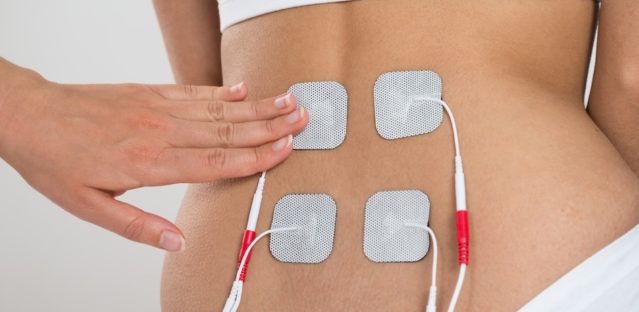Phoenix: 602.866.2231 | Queen Creek: 480.987.1870
Physical Therapy Methods Ex...
Physical Therapy Methods Explained There is more to physical therapy than meets the eye. Going to the physical therapist for the first time could be overwhelming and confusing, especially if you are hearing things that ...
Physical Therapy Methods Explained
There is more to physical therapy than meets the eye. Going to the physical therapist for the first time could be overwhelming and confusing, especially if you are hearing things that you have never heard before. What is dry needling? What is TENS? What is scraping and is it painful? On your next visit to the physical therapist, you may hear some of these physical therapy methods explained.
Your physical therapist will work with you to tailor a plan specific to your health condition, level of mobility and future goals. Not every technique is appropriate for each patient — that is up to your physical therapist to determine. However many of these are common, or are increasingly becoming common, to aid you during your journey back to health.
Physical Therapy Methods Explained
Manual Therapy
Manual therapy is one of the more common physical therapy modalities used because it can include any number of techniques for any number of injuries and conditions. Manual therapy may include assisted stretching, strengthening exercises and/or guiding the body back to the way it was originally designed to operate. Manual therapy is what sets physical therapists apart from many other practitioners out there.
A common form of manual therapy is soft tissue mobilization. Your physical therapist may use this method to help heal soft tissue injuries. Similar to massage but more specific in nature, soft tissue mobilization focuses on the injury or issue at hand that your body has been trying to heal.
Dry Needling
What is dry needling? Often confused with acupuncture, dry needling is a technique that is gaining popularity among patients that use it to deal with chronic pain. Dry needling uses filament needles gently inserted into trigger points in muscles to release muscle pressure, lowering the amount of pain a patient is feeling. Dry needling is typically painless and relief can be felt, for some conditions, almost immediately.
Transcutaneous Electrical Nerve Stimulation (TENS)
Better known as TENS, Transcutaneous Electrical Nerve Stimulation is administered through a small electronic device that sends pulses of electronic stimulation across the skin and to the nerves. The use of a TENS unit has been shown to reduce pain, increase blood flow to affected areas, increase range of motion and more. While the use of TENS is mostly painless, you may feel a small “buzzing” sensation on the area where the TENS unit pads are applied.
Scraping
This technique may be less unpleasant than it sounds. During scraping, your physical therapist will use a tool to gently “scrape” back and forth over any muscle tissue where you may be experiencing issues. This serves to reduce soft tissue muscle restrictions. Scraping can be beneficial to patients with scar tissue, fascia restrictions, strained muscles and more.
Therapeutic Cupping
You may have heard of therapeutic cupping more recently and the use of it by celebrities and Olympic athletes is bringing awareness to this ancient technique. There are many benefits of therapeutic cupping, from increasing blood flow and reducing muscle tension to improved immune function and relaxation. The most common form of cupping therapy is dry cupping, where cups are heat sealed and placed on a region of the body (most commonly the back) and remain for a period of up to 15 minutes.
Cryotherapy
While it may at first sound intimidating, cryotherapy — simply stated– is the application of ice. Your physical therapist may recommend using ice to aid in your recovery. Cryotherapy takes many forms and can be something as simple as an ice pack to help decrease inflammation, restrict blood flow or decrease swelling.
Exercise
This is probably the first thing that comes to mind when you think of physical therapy: repetitive movements or exercise. Your physical therapist is trained to know how the body works and what it needs to function and function well. If your physical therapist recommends an at-home program for you — follow through! Following their recommendations for exercise will help you to regain strength and mobility and improve your quality of life.
Traction
Traction is generally used in patients experiencing certain spine issues or conditions such as a herniated disc, sciatica, pinched nerve, bone spurs, degenerative disc disease and more. Traction helps to decompress the vertebrae in the spine and can help alleviate back pain and other issues. It can either be manual (hands on by your physical therapist) or mechanical (done by a traction machine) in nature. Your physical therapist determines which method may be more beneficial for your recovery.
On your next visit to the physical therapist, you may hear these physical therapy methods explained or more. There are many other techniques that your physical therapist may use to help you regain strength and mobility or recover from surgery, injury or accident.
Our trained and licensed physical therapists at Above & Beyond Physical Therapy in Queen Creek and Phoenix will work with you to tailor a plan to your specific needs and goals. Contact us today to find out how physical therapy can help you in your recovery and get you back to living the life you love.


 hover background
hover background